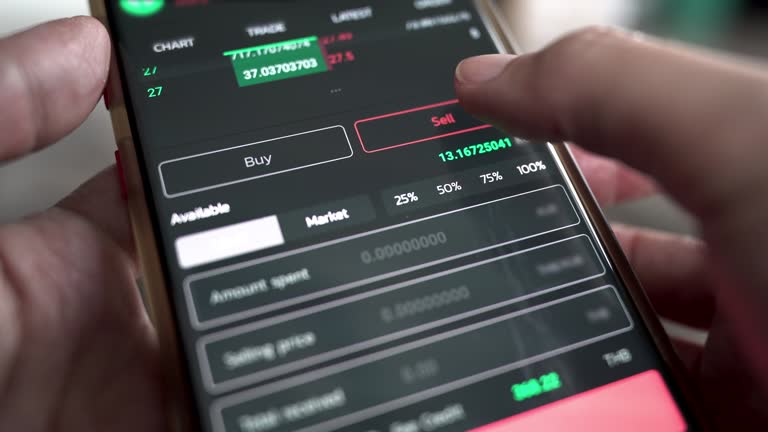Bitcoin & Beyond: The Rise of Decentralized Money in a Digital World
Introduction
When Bitcoin emerged in 2009, it introduced the world to a radical idea: money without banks or governments. What started as an obscure experiment has since sparked a financial revolution, giving rise to thousands of cryptocurrencies and a decentralized economy built on blockchain technology.
Today, Bitcoin is more than just digital gold—it’s the foundation of a new financial paradigm. But the story doesn’t end there. Ethereum, DeFi, NFTs, and CBDCs are expanding the possibilities of decentralized money, reshaping industries, and challenging traditional finance.
In this article, we’ll explore:
✔ Bitcoin’s role as digital gold
✔ The rise of smart contracts & DeFi
✔ How CBDCs and stablecoins are changing payments
✔ The future of money in a decentralized world
1. Bitcoin: The Pioneer of Digital Scarcity
Bitcoin (BTC) was created by the mysterious Satoshi Nakamoto as a peer-to-peer electronic cash system. Its key innovations include:
- Limited Supply: Only 21 million BTC will ever exist, making it deflationary (unlike fiat money).
- Decentralization: No single entity controls Bitcoin—it’s secured by a global network of miners.
- Censorship Resistance: Transactions cannot be blocked or reversed by governments or banks.
Over time, Bitcoin has evolved from an internet experiment into “digital gold”—a store of value for investors hedging against inflation and economic instability.
Did You Know?
- El Salvador made Bitcoin legal tender in 2021.
- BlackRock, Fidelity, and MicroStrategy hold billions in BTC as a long-term asset.
- The 2024 Bitcoin Halving reduced miner rewards, increasing scarcity.
2. Ethereum & Smart Contracts: Money That Can Program Itself
While Bitcoin introduced decentralized money, Ethereum (ETH) took it further by enabling smart contracts—self-executing agreements that power:
- DeFi (Decentralized Finance) – Lending, trading, and earning interest without banks.
- NFTs (Non-Fungible Tokens) – Digital ownership of art, music, and virtual assets.
- DAOs (Decentralized Autonomous Organizations) – Community-run entities with no central leadership.
Ethereum’s upgrade to Proof-of-Stake (Ethereum 2.0) made it faster and more eco-friendly, cementing its role as the backbone of Web3.
DeFi in Numbers (2024)
- Total Value Locked (TVL): Over $100 Billion
- Leading Protocols: Uniswap, Aave, MakerDAO
- Yield Farming & Staking: Users earn passive income in crypto
3. Stablecoins & CBDCs: Bridging Crypto and Traditional Finance
As crypto adoption grows, two key developments are making digital money more practical:
A. Stablecoins (Crypto Without Volatility)
Stablecoins like USDT, USDC, and DAI are pegged to fiat currencies (e.g., USD), offering:
✅ Instant cross-border payments
✅ Lower fees than traditional banking
✅ A stable store of value in volatile markets
B. Central Bank Digital Currencies (CBDCs)
Governments are now creating their own digital currencies:
- China’s Digital Yuan – Already in pilot testing.
- The Digital Dollar (US) & Digital Euro (EU) – Under exploration.
While CBDCs offer efficiency, they also raise privacy concerns, as they could give governments more control over spending.
4. The Future: Will Decentralized Money Replace Banks?
The rise of Bitcoin, DeFi, and digital currencies suggests a future where:
- People hold their own money (via self-custody wallets).
- Banks compete with DeFi protocols for loans and savings.
- Global payments take seconds, not days.
Challenges Ahead
- Regulation: Will governments embrace or restrict crypto?
- Scalability: Can blockchains handle billions of users?
- Adoption: Will everyday people trust decentralized money?
Conclusion: Money Will Never Be the Same
Bitcoin was just the beginning. Today, decentralized money is evolving into a global financial system that’s open, borderless, and programmable.
Whether through Bitcoin’s store of value, Ethereum’s smart contracts, or CBDCs’ digital efficiency, one thing is clear: the future of money is digital, and it’s happening now.
What’s Next?
- Will Bitcoin hit $100K in 2025?
- Can Ethereum overtake Bitcoin in utility?
- Will DeFi make traditional banks obsolete?
The answers depend on adoption, innovation, and regulation. But one thing is certain: the age of decentralized money has arrived.

